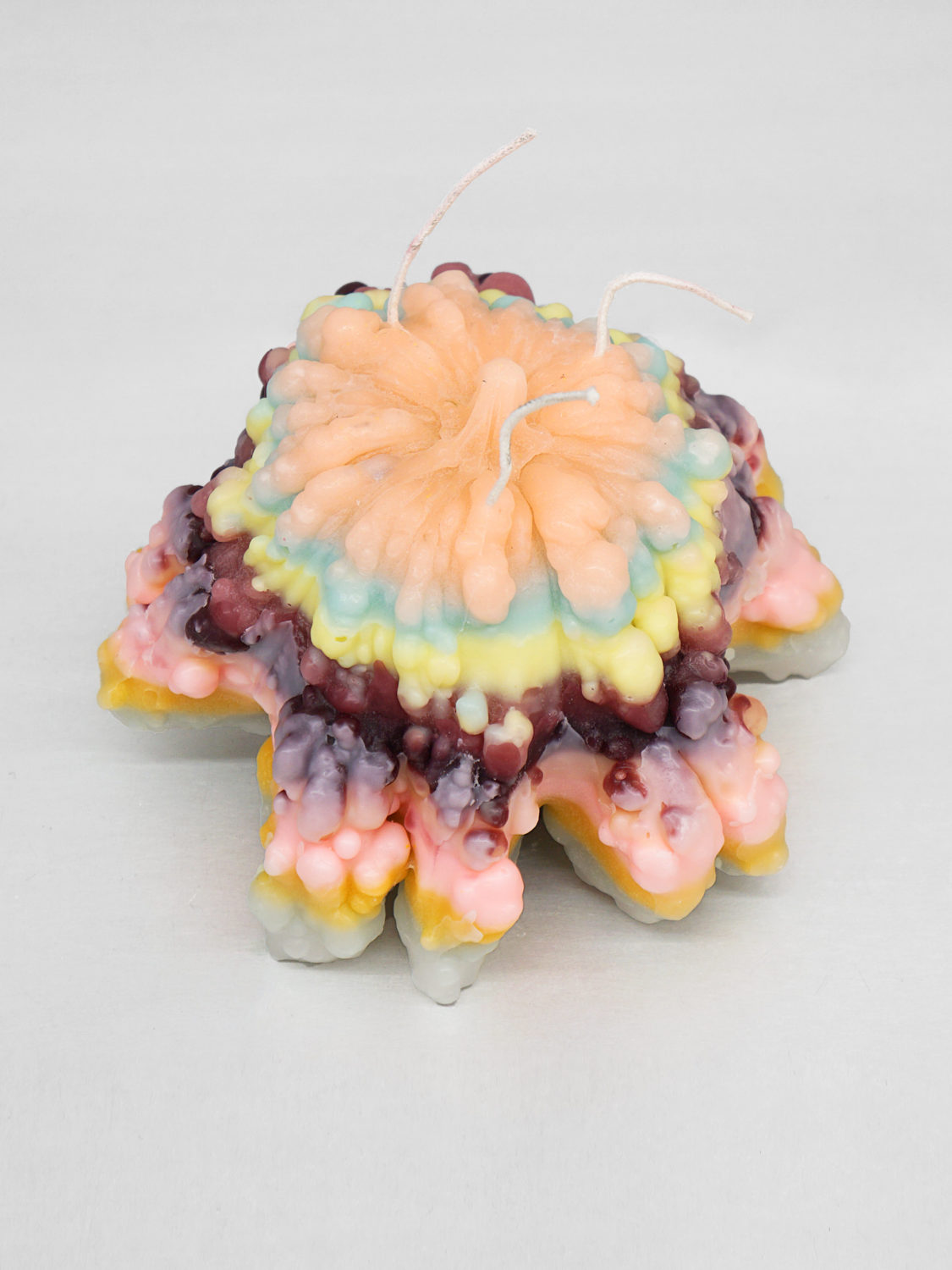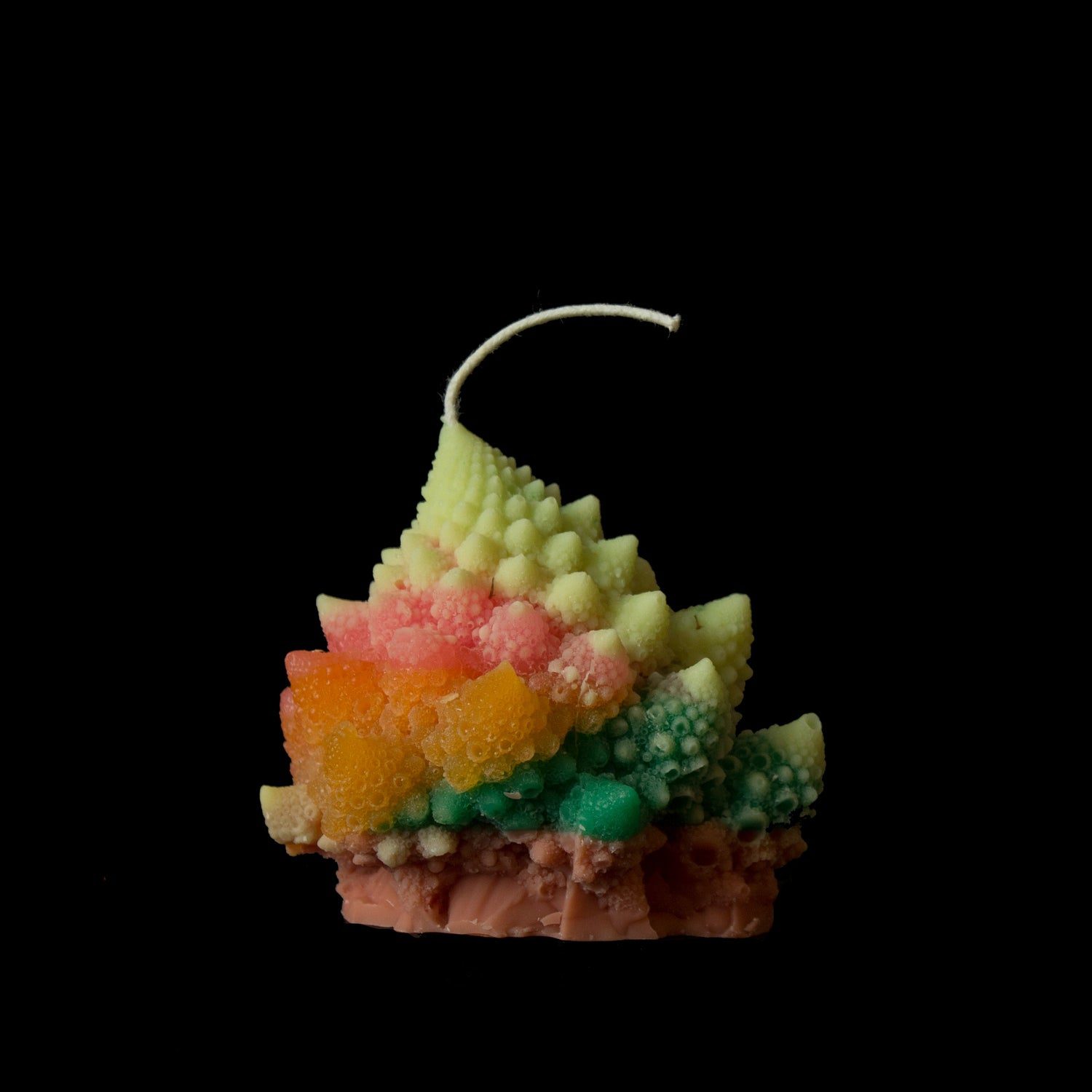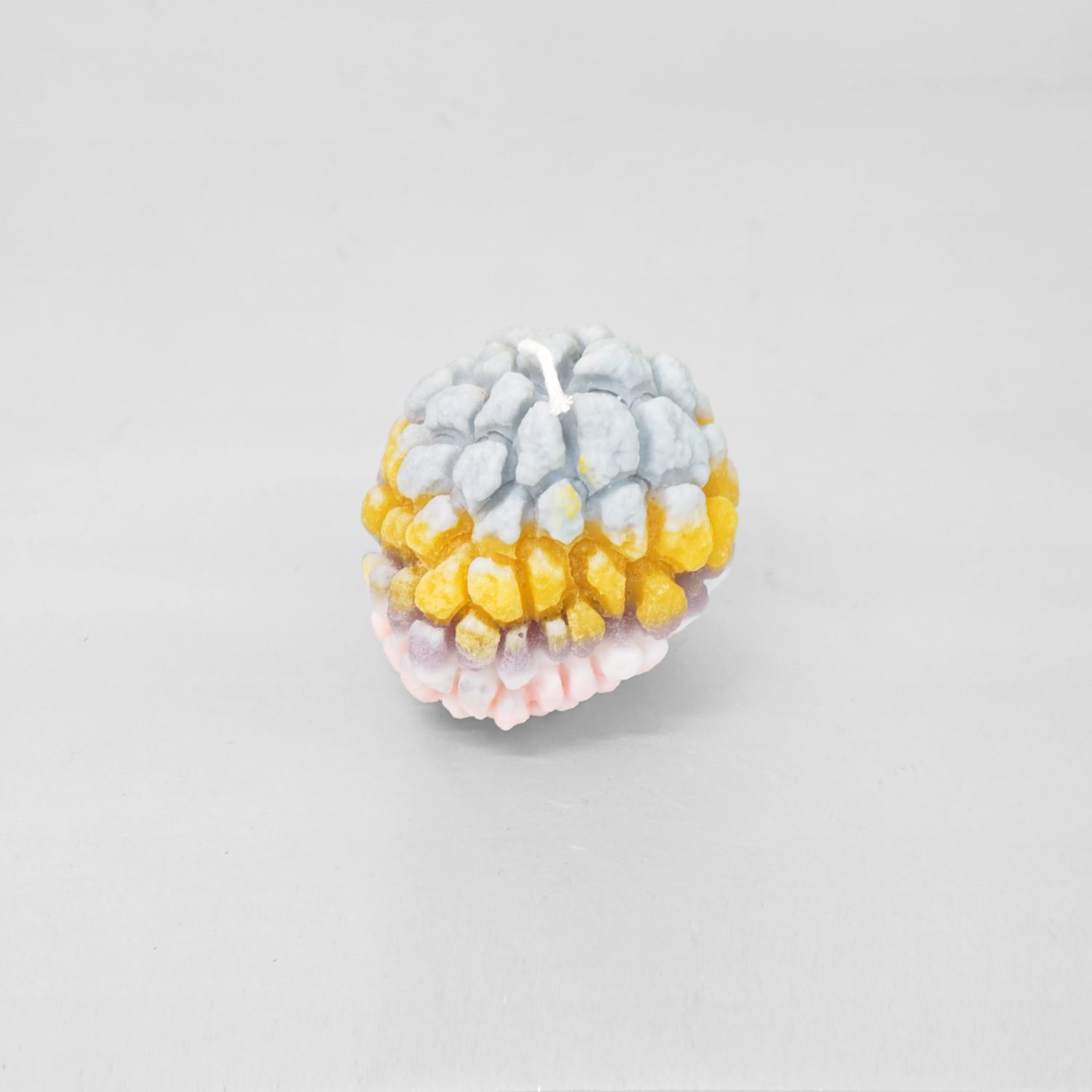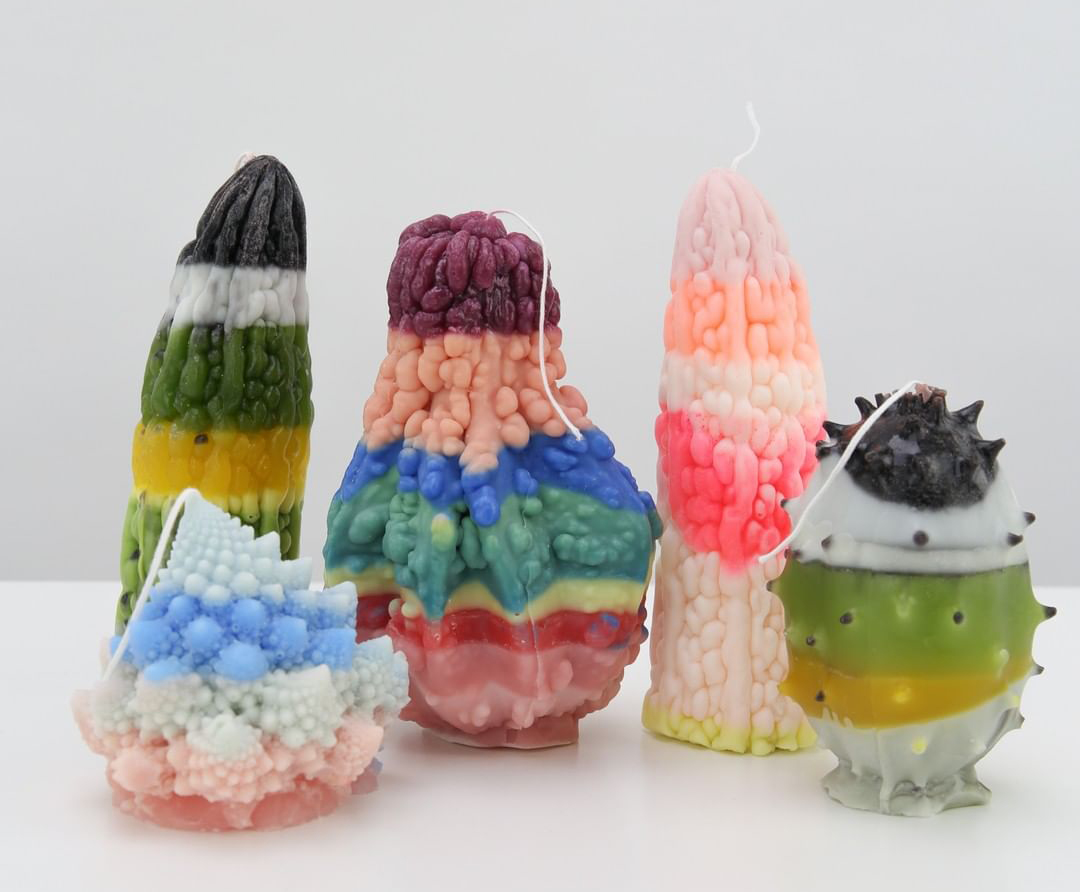Interview: Candle Maker Piera Bochner On Freakish Beauty And Self-Sufficiency
By Something CuratedBrooklyn-based artist and designer Piera Bochner’s mesmeric candles were birthed from a love of wax and a desire to investigate how wicks and flames will travel down new and unconventional paths. The shapes of Bochner’s covetable candles, now stocked at Browns and Farfetch among other retailers, come from pre-existing forms, like Romanesco broccolis and bitter melons, plucked from the produce stands of Chinatown, Union Square, and the supermarkets of Berlin. To create the candles, different coloured waxes are individually melted and poured into moulds, cooling and hardening before the next layer is added. The different mixtures of wax colours combined with the melting power of the flame creates endless variations of the original form. As Bochner puts, “The candle becomes both a functional object when its purpose is enacted, as well as an ever-changing sculptural form when inert.” To learn more about the artist’s work and what she has planned next, Something Curated spoke with Bochner.

Something Curated: Can you give us some insight into your background; how did you first become interested in candle making?
Piera Bochner: I first started making my vegetable candles while studying abroad in Berlin during college. I took a sculpture techniques class and we had an assignment to explore casting. There was a supermarket near where I was living that had the most incredible selection of produce; I would go and ogle all the different shapes and colours of the produce every time I went. When it came time to figure out what shape to cast I immediately went there and picked up a crazy, fractally Romanesco. Once you’ve made a mould you then have to fill it with something to produce the cast. I had been looking for an excuse to work with wax because I have been obsessed with it since I was a child – I was constantly sticking my fingers into any candle I came across and playing with the wax while it hardened. The Romanesco mold became the perfect excuse to indulge in my love of wax. I added a wick to my mould in order to create a functional object but also because I was exploring the idea of ephemeral sculptures since I knew I couldn’t take most of the things I made in Berlin home with me. My candles started as an exploration in detachment and dematerialism, but now most people I talk to who own them say they can’t bring themselves to burn them.

SC: What attracts you to the forms of the vegetables and fruits you cast?
PB: Picking the fruit or vegetable I want to cast is a very intuitive process. I love to explore farmers markets and produce stands or sections of shops wherever I am living, so I am constantly on the lookout for intriguing forms. I usually try to allow things to cross my path rather than going into it with something specific in mind. I’ll look for produce with unexpected textures and shapes, something that you wouldn’t necessarily come across everyday. I want my candles to be reminiscent of something you’ve seen while also subverting the homogenization of food and indulging in the freakish beauty that nature creates.

SC: What are you currently working on and how has the pandemic affected the way you operate?
PB: I am always making candles and exploring endless combinations of colours within my candles, but I am currently gearing up to cast some new forms that expand past produce into a new realm of found organic shapes. The new shapes will hopefully be available by the end of summer – they are going to be big and bold and freaky. I think the pandemic has shifted so much in all of our lives, for me it’s been mostly an internal transformation but it has definitely affected my studio practice as a whole. The work I make has become far more expansive and exploratory due to all the time I had to turn inward and reflect.

SC: Could you expand on your brilliant use of colour?
PB: I would really credit my use and understanding of colour to my dad. He is an artist and his studio was in our home so I grew up watching him paint and make these incredible colour studies for his paintings. I worked for a few years helping him make some of his paintings and prints and that experience taught me so much about how to combine colours for the greatest impact. He showed me the importance of grey, brown, and black in helping to enhance more saturated, bright colours. I learned what colours mixed to make others and the power of complementary colours. Now in my own work I feel so much freedom to explore unexpected colour combinations because I have left behind all judgment of “pretty” or “ugly” colours and see them only for their potential and in relation to one another.

SC: What do you want to learn more about?
PB: I recently learned how to crochet so I am always trying to learn new skills that allow me to make the things I want for myself. I made my first candle because I wanted a candle for my home. There is something so satisfying to me in the gift of fulfilling a desire through learning and creating, so I want to learn more skills that allow me to be self-sufficient and create the things I need or want. Other than that I am always trying to learn more about how to be a force for positive change and encouragement for others and how to dismantle the patriarchal, imperialist structures that exist in this world.
Feature image courtesy Piera Bochner